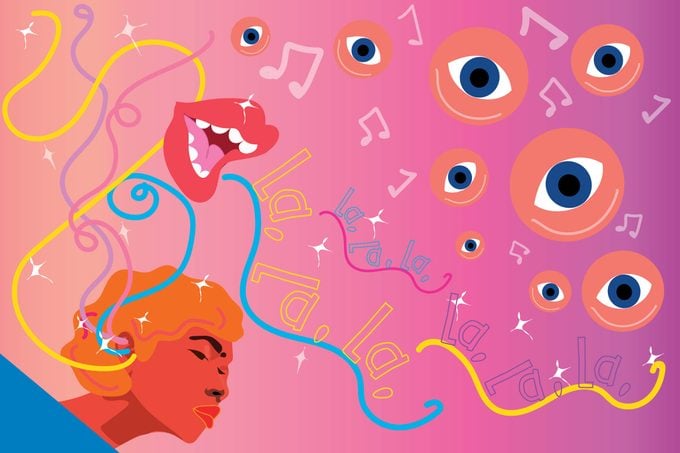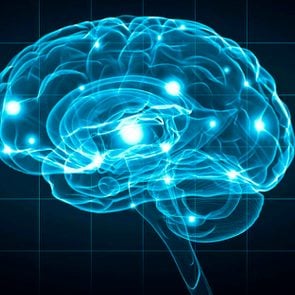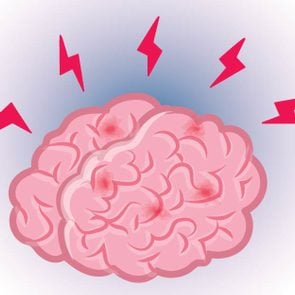What Is Synesthesia? What It’s Like to Hear Colors and See Sounds
Updated: Sep. 04, 2020
A journalist and a neurologist share what it's really like to have synesthesia—a rare neurological phenomenon where you can hear colors, see sounds, and taste words.
Our editors and experts handpick every product we feature. We may earn a commission from your purchases.
Imagine if you could hear colors, see sounds, and taste words. These are just some of the fascinating sensations that people with synesthesia experience. The neurological condition is caused by a type of wiring in the brain that results in one sense co-activating another—for example, hearing certain noises and, as a result, seeing certain colors.
Synesthesia is rare and only about 2 to 4 percent of the general population has the condition, according to a 2011 study in PLoS Biology that looked at the genetics of synesthesia. (About 40 percent of people with synesthesia have a relative with the condition, but synesthesia can also occur with drug use, sensory deprivation, or brain damage.)
“The brain misfires one sense, [which] activates another sense concurrently. A primary sense might activate a secondary sense with it,” says Bruce Cameron, a Dallas-based licensed professional counselor. “Research has noted nearly 60 types or variations of synesthesia.”

Types of synesthesia
According to Laura Linebarger, licensed clinical psychologist, consultant, and addictions specialist in Chicago, “A whole dissertation could be written on just one type.”
Linebarger says some of the more common ones include:
- grapheme-color synesthesia (letters and numbers with color)
- chromesthesia (sounds with color)
- spatial sequence synesthesia (numbers in space)
- number form (a mental map of numbers)
- auditory-tactile synesthesia (sounds and bodily sensations)
- ordinal linguistic personification (numbers, letters, or sequences and words with personality)
- mirror-touch synesthesia (sensing something after seeing it done to another, i.e., feeling a touch on your arm when you see another’s arm touched)
- lexical-gustatory synesthesia (tastes or unusual sensations with words, ex: when I each shrimp, it tastes ‘bouncy’)
(Try these brain foods that help make you smarter.)
A journalist with ordinal linguistic personification synesthesia
A common type of synesthesia is the aforementioned ordinal linguistic personification synesthesia—associating numbers and letters with personality. “If I see a license plate on a car, I don’t just see the plate, I see each individual personality for each letter and number,” says Teena Maddox, associate managing editor at TechRepublic, a website that provides IT professionals with the latest technology news.
“They dance through my head, in the background, without me fully realizing it. It’s the same thing when I see words. It’s the first letter that stands out the most, and I see that personality come to life before my eyes. It doesn’t distract me, however, it is simply how my brain is wired and I process it along with everything else,” says Maddox. (Here are some interesting brain facts you probably didn’t know.)
A neurologist with mirror-touch synesthesia
A rarer variation of synesthesia is mirror-touch synesthesia—about two in 100 people have it. People with mirror-touch synesthesia feel sensations when they see someone else being touched, including pain if someone else is injured.
Joel Salinas, MD, a neurologist at Massachusetts General Hospital and Harvard Medical School, and author of Mirror Touch: Notes From a Doctor Who Can Feel Your Pain, explains what it’s like being a doctor with mirror-touch.
“As you can imagine, in the hospital, having mirror touch can be a bit of a challenge sometimes, but it also helps me help others,” Salinas says. “Recently, during one of my rounds, I was consulted to see a young woman who started acting combative. As I go ahead with the standard exam maneuvers to test her level of arousal and attention, my body mirrors her movements—her beads of sweat, her furrowed brow and grimace.” (Try these unusual neurobic exercises that help your brain.)
“This is a normal experience for me, but I notice an unusual feeling in my chest that I can’t shake,” Dr. Salinas continues. “I recommend a special CT scan of her chest to get a closer look. Not long after, her study results come back. They reveal blood clots in her lungs. Without my mirror touch, I would have likely missed it.”
Living with synesthesia
Currently, there is no treatment for synesthesia. However, there’s no indication it’s a condition that needs to be fixed. The truth is people with this rare neurological phenomenon have different sensory experiences that leads them to live life a little differently. Both Maddox and Dr. Salinas are successful in their professions and have realized their synesthesia only helps to enhance their experiences.
To find out if you have synesthesia or if you suspect you have synesthesia, consult a medical professional, such as a neurologist, for further assessment. If you have synesthesia and feel like you’re alone, visit GoodTherapy to find a mental health professional near you. (Read more on how to improve your mental health.)












